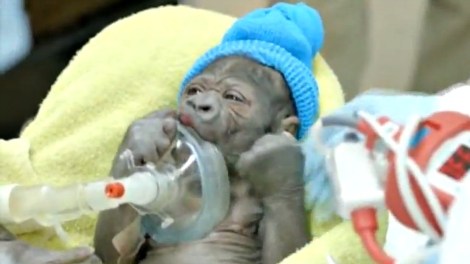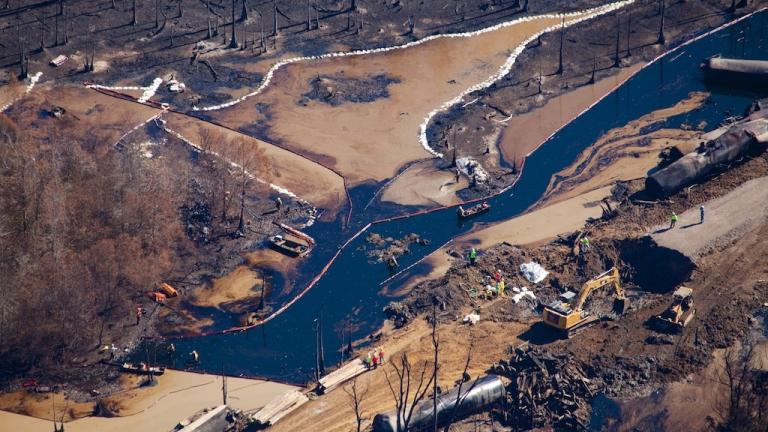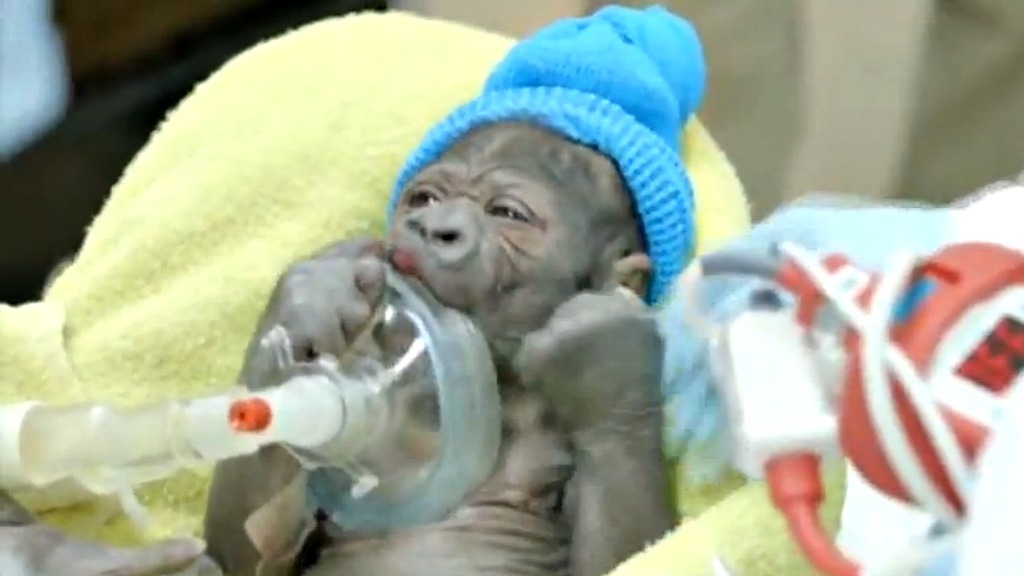After chimps and bonobos, gorillas are our closest animal relatives, sharing 98.3 percent of our genetic code. So it’s no wonder people are saying this baby gorilla, born last week via a rare animal C-section, looks kind of like a baby-shaped wrinkly old human:
Doctors delivered little Benjamin Button* at the San Diego Zoo Safari Park after her mom, 18-year-old Imani, was having a tough time in labor. The baby gorilla’s lung collapsed, but vets successfully operated, and now Ms. Button is recovering in the ICU.

She’s one of 100,000 to 200,000 gorillas left in the world, so roughly one Salt Lake City or Fort Lauderdale full of banana fiends. According to World Wildlife Fund, things aren’t looking too good for gorillas; within the next decade or so, they could be mostly gone from the Congo Basin:
Habitat destruction is a problem across their central African range. Gorillas are also still killed for the bushmeat trade. That trade has helped spread the Ebola virus, which is deadly to both gorillas and humans. Efforts to protect gorillas are often hampered by weak law enforcement and civil unrest in many places where gorillas live.
Part of the problem is that, like us, gorillas are relatively slow on the baby-making front. They give birth to a measly ONE at a time, and then they wait for a year or two before spawning another. If we could just get them on the Duggar train …



